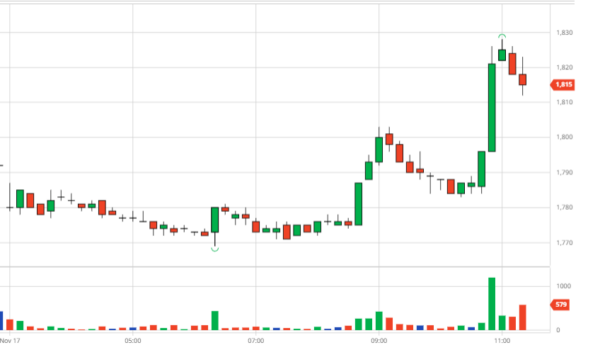GCA reported an increase in October inventories, combined with a weakening Reais, which pulled New York Arabica coffee prices down further…

At the end of the session, the price of Robusta coffee on ICE Europe – London reversed to recover. Futures for delivery in January increased by 26 USD to 1,818 USD/ton and term for delivery in March increased by 16 USD to 1,794 USD/ton, significant increases. Trading volume quite above average.
In contrast, the price of Arabica coffee on the ICE US floor – New York dropped for the fourth consecutive session. December spot futures fell another 2.75 cents, to 152.70 cents/lb and March futures fell another 2.05 cents to 156.35 cents/lb, very significant reductions. Trading volume remained very high above average.
The price of green coffee beans in the Central Highlands provinces increased by 300-400 VND, to ranged in the range of 40,000-40,600 VND/kg.
Coffee prices on both exchanges showed a mixed trend, supported by the ICE-managed inventory report, rising in London and falling in New York. Technical trends suggest that London futures prices will have a significant rally in the short term.
Arabica coffee prices continued to come under downward pressure from the weakening Reais as the exchange rate fell another 0.44% to 1 USD = 5,4080 R$ due to the navigation of South America’s largest economy, which encouraged Brazilians promote the sale of new crop coffee when it is profitable because they will get more local currency. In addition, the impact of the October inventory report increased by 5.8% over the same period of the North American Coffee Bean Association (GCA) showed that the supply for the world’s second largest consumer market remained stable. determined.
Robusta coffee prices recovered after the assessment of economists that the European Central Bank (ECB) was too slow in adjusting the euro interest rate and the UK needed to take more containment measures. Inflation is currently too high, including a £55 billion emergency spending and tax hike program just announced by the Treasury.
It is forecasted that the Central Highlands coffee region will have rain on a large scale, hindering the harvesting and drying of coffee in the coming days, causing the supply to the export market to slow down.
English (giacaphe.com)
